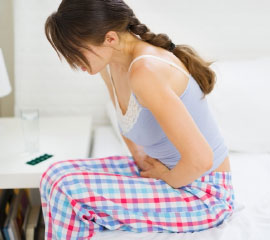Dr. Vedant H. Karvir - Gasteroenterologist in Palghar

Dr. Vedant H. Karvir, a Hepato-Gastroenterologist & Interventional Endoscopist from West Mumbai. Globus is Mumbai's first specialized facility for all adult and pediatric gastro-intestinal issues - the stomach, intestines, esophagus, liver, pancreas, colon, and rectum. Dr. Vedant H. Karvir is the best Gastroenterologist in Palghar and established the Globus hospital. His keen interest areas include Liver Diseases (Hepatology) and Therapeutic Endoscopy. After finishing his basic medical training (MBBS) in Kolhapur, he pursued a three-year programme (MD) with research in gastroenterology and hepatology, after which he joined the reputed KEM Hospital in Mumbai as a fellow in the Gastroenterology and Hepatology Department for three years. He has performed more than 15,000 Gastroscopies and over 3,000 Colonoscopies. Dr.Vedant H. Karvir, Gastroenterologist in Palghar has performed several complicated surgeries, including management of gastrointestinal bleeding, removal of foreign materials (for example, a coin in a food pipe), esophageal dilatation, ERCP (stone removal in CBD), and PEG Feeding Tube insertion. He received extensive hands-on training in diagnostic and therapeutic upper GI tract endoscopy and colonoscopy on the Olympus HD video endoscope system.
The Top Gastroenterologist in Palghar was also elected as an International member of

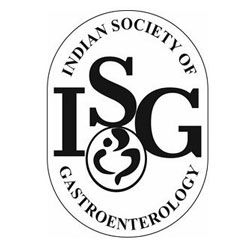
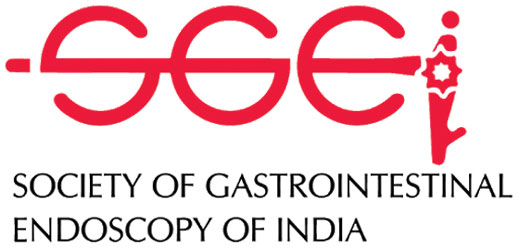
WHEN DO I VISIT A GASTEROENTEROLOGIST
People who have symptoms such as irregular bowel movements, rectal bleeding, frequent heartburn, stomach discomfort, bloating, difficulty swallowing, or are of age to begin regular colorectal cancer screenings, you may be referred to see a gastroenterologist. Early diagnosis of symptoms may aid in determining the underlying reason for altered digestive function.
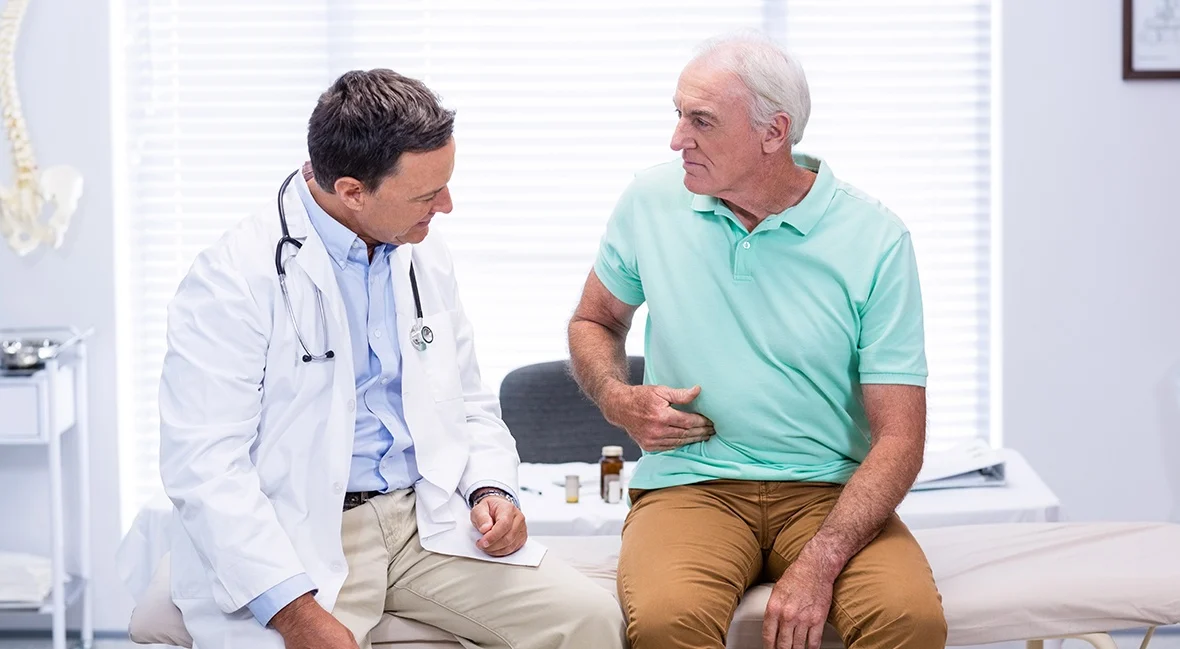
WHO IS A GASTEROENTEROLOGIST
A gastroenterologist is a specialist with extensive training in the treatment and management of the gastrointestinal system and liver.
Gastroenterologists get specialized training that allows them to deliver high-quality, comprehensive treatment to patients suffering from a broad range of gastrointestinal disorders.
WHAT ARE THE PROCEDURES DONE BY GASTEROENTEROLOGIST
Gastroenterologists are trained to conduct the following procedures and treatments:
- Upper gastrointestinal endoscopy
- Hemostasis
- Sigmoidoscopy
- Colonoscopy
- Retrograde Endoscopic Cholangiopancreatography
- Mucosal Endoscopic Resection
- Ultrasound Endoscopy
- Polypectomy
- Dilation of the Esophagus and Intestine
WHAT ARE THE CONDITIONS THAT ARE TREATED BY GASTEROENTEROLOGIST
The following are the most frequent ailments, diseases, and disorders diagnosed and treated by gastroenterologists:
- Hemorrhoids
- Hepatitis
- Stomach pain
- Ulcers (Painful Sores in the Stomach Lining)
- Pancreatitis
- Gluten Intolerance
- Cancer (Gastrointestinal, Liver, Pancreatic, Colorectal)
WHAT ARE THE SYMPTOMS AND REASON THAT INDICATE YOU SHOULD SEE A GASTEROENTEROLOGIST?
Acidity and indigestion
Patients with short-term symptoms of acidity, liquid reflux, or digestions may be controlled with over-the-counter medicine, but if these symptoms are persistent and long-lasting, they must see a gastroenterologist.
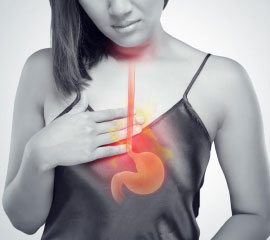
Vomiting Blood
The presence of blood in the vomit signalLed a medical emergency. In such a case, in addition to medical care, resuscitation, and blood transfusion, the patient may need emergency endoscopy. Endoscopy is used to reduce current bleeding in these individuals, and it is sometimes used to prevent additional bleeding.
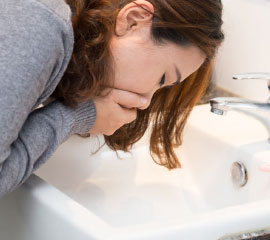
Difficulty in swallowing
When a patient suspects that something is blocked in the food pipe, an upper GI endoscopy is frequently required for diagnosis and subsequent care of the condition. Endoscopy may detect disorders such as reflux esophagitis, esophageal tumors, achalasia cardia, and stricture (narrowing of esophagus). Specific drugs, endoscopic procedures, or surgery may be used to treat these conditions.
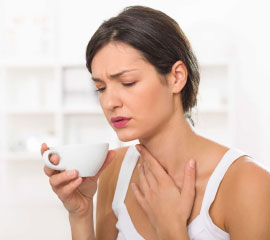
Constipation
Constipation is a very common problem and shows symptoms such as inadequate evacuation and abdominal discomfort, but also social and emotional suffering. Careful examination, laboratory testing, and colonoscopy aid in determining the reason of constipation, and treating it saves the patient money. Common curable causes of constipation include irritable bowel syndrome, functional constipation, colonic tumors, polyps, inflammation of the rectum, and solitary rectal ulcer syndrome.
Read More..
Blood in stools
Small amounts of blood in the stool may be treated on an outpatient basis, however excessive levels of blood in the stool can constitute a medical emergency. Endoscopy may easily identify and treat an ulcer in the interior lining of the small or large intestine, a tumor, or a polyp. People must consult a gastroenterologist to determine the cause and treatment options for this condition.
Read More..
Jaundice
Jaundice is described as the presence of yellow discoloration of the skin and sclera. Jaundice is a frequent sign of liver disease. Jaundice is caused by a wide range of diseases, including viral infections of the liver (hepatitis), long-term liver damage (liver cirrhosis), and blockage of the liver's bile drainage channels. In these circumstances, careful examination and treatment are critical to avoid liver failure, bile route infection, and irreversible liver damage. Patients' health and overall well-being increase significantly when they get timely therapy.
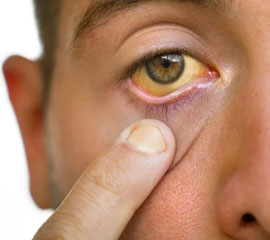
Diarrhea
Diarrhea is often caused by the intake of infectious agents such as viruses, bacteria, or parasites in food or drink. When these instances are short, they are handled by increasing fluids orally and with medications to combat infections. Chronic diarrhea, on the other hand, may cause malnutrition, weight loss, and a poor quality of life if it lasts longer than a month. In these cases, a laboratory and endoscopic assessment of the etiology of diarrhea is recommended. Food allergies, gluten sensitivity, inflammatory bowel disorders such as ulcerative colitis and Crohn's disease, and tuberculosis of the gut, might go unnoticed for months until a systematic approach and effective treatment is given.
Read More..
Frequent Heartburn
Occasional heartburn is probably nothing to worry about, but recurrent heartburn might be a sign of Gastroesophageal Reflux Disease (GERD), Barrett's esophagus, or even esophageal cancer. If you have frequent acid reflux, you may be diagnosed with GERD and begin getting medication to relieve your pain. Testing might be used to confirm the diagnosis.
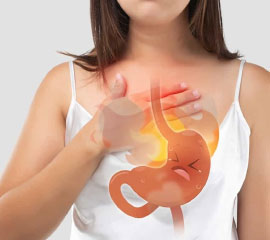
Bloating and abdominal pain
Occasional moderate stomach discomfort and bloating may not be enough to warrant a visit to a specialist. However, if this occurs practically every meal or is accompanied by nausea or uncomfortable bowel movements, notify your doctor, who may send you to a gastroenterologist for additional testing.
Read More..
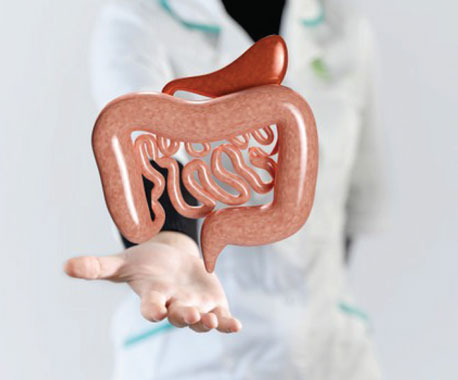
Ulcer
A burning feeling in the stomach, along with discomfort, suggests that you have stomach ulcers. As a result, anytime you consume anything, you experience pain because the acid that breaks down the meal causes significant pain. Consult a gastroenterologist before ulcers worsen your condition.

Preventative Screenings
Even if you don't have any symptoms, a gastroenterologist may screen colon cancer. Colorectal cancer screenings begin at age 50 and continue until age 75 for people at average risk. A colonoscopy, imaging scans, and/or stool samples may be used in screening procedures.
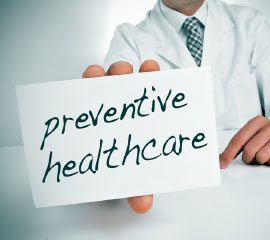
Consult our expert Gastroenterologist Dr. Vedant Karvir
If you notice any of the above mentioned symptoms, it is necessary that you visit a skilled gastroenterologist immediately. Globus Hospital is the top gastroenterology hospital in Mumbai, with the most qualified and dedicated gastroenterologists.
They have been treating patients for decades and have never failed to deliver on their promise of excellence. Contact our skilled gastroenterologists in Palghar right now to begin treat your medical conditions.
TREATMENT & FACILITIES
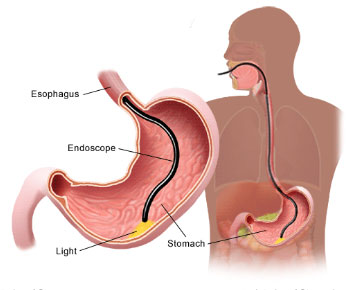
Diagnostic Upper GI
Endoscopy is a non-surgical procedure that allows the doctor to take a look at the internal organs of the body through a fiber optic camera
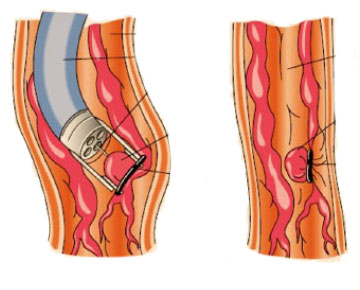
Variceal Band Ligation
Esophageal variceal bleeding is the most common in patients with upper gastrointestinal tract hemorrhage

Endoscopic Glue Injection
Endoscopic cyanoacrylate glue injection (ECGI) is recommended as an effective treatment for bleeding gastric varices.
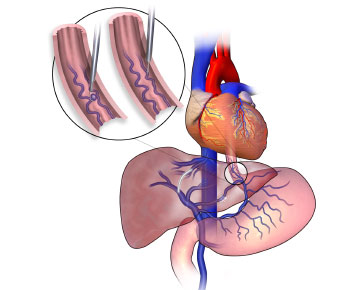
Endoscopic Sclerotherapy
Endoscopic Sclerotherapy is a procedure used for the treatment for acute variceal bleeding.
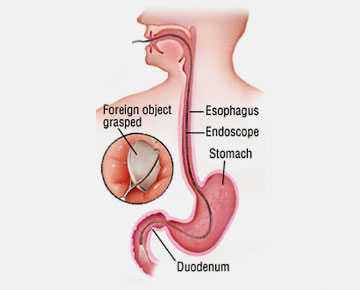
Foreign Body Removal
Foreign Body Removal refers to the retrieval of foreign objects that have been introduced into the body, sometimes by accident.
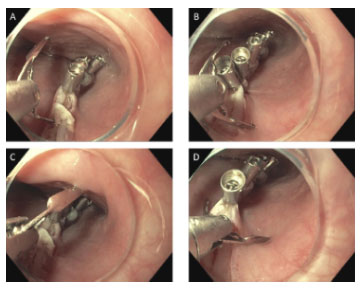
Hemoclip Application & Polypectomy
An endoclip is a device made of metal that is used in medical endoscopy to close two mucosal surfaces without going for surgery.
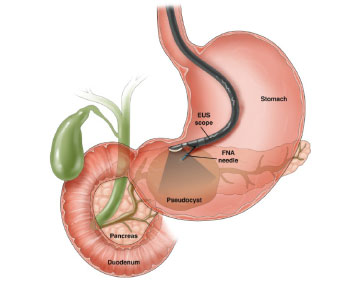
ERCP (CBD /PD stenting)
ERCP is a technique that combines upper gastrointestinal endoscopy and X-rays to treat problems related to the Bile and the Pancreatic ducts.
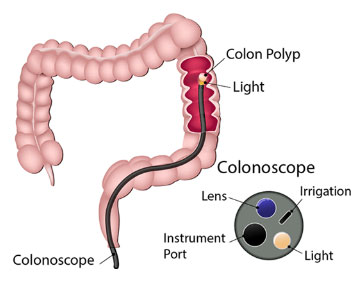
Sigmoidoscopy and Colonoscopy
An endoscopy of the lower part of the digestive tract is called Lower GI scopy. The doctor views the Rectum, the Colon, stomach and the Large intestine during the procedure.

Stricture Dilatation
Esophageal strictures are commonly used to widen a narrow bowel segment. These strictures are dilated during a series of procedures to achieve the desired size opening.
ENDOSCOPY FAQ's
An upper GI endoscopy is a problems in procedure to diagnose and treat your upper GI (Gastrointestinal) tract. The upper GI tract includes your food pipe (esophagus), stomach, and the first part of your small intestine (the duodenum).
This procedure is done using a long, flexible tube called an endoscope. The tube has a tiny light and video camera on one end. The tube is put into your mouth and throat. Then it is slowly pushed through your esophagus and stomach, and into your duodenum. Video images from the tube are seen on a monitor.
The most common reasons for upper Endoscopy include:
- Unexplained discomfort or pain in the upper abdomen.
- GERD or gastroesophageal reflux disease (often called heartburn).
- Persistent nausea and vomiting.
- Upper gastrointestinal (GI) bleeding (vomiting blood or blood found in the stool that originated from the upper part of the GI tract). Bleeding can be treated during the endoscopy.
- Iron deficiency anemia (low blood count associated with a low iron level in the blood) in someone who has had no visible bleeding.
- Difficulty swallowing; food/liquids getting stuck in the esophagus during swallowing.
You may be asked not to eat or drink anything for up to eight hours before the test. This usually means no food or drink after mid night. It is important for your stomach to be empty to allow the doctor to visualize the entire area.
Please consult your doctor if you are taking any Heart medication / Over-the-counter medication / Diabetes medication
You should arrange for a friend or family member to escort you home after the examination. Although you will be awake by the time you are discharged, the medications used for sedation may cause temporary changes in your reflexes and judgment and interfere with your ability to drive or make decisions.
You will be asked to lie on your left side. This provides the best view of the stomach.
- Your blood pressure, pulse, breathing, and blood oxygen levels will be monitired during the test. An intravenous (IV) needle will be placed in your arm to provide a sedative. Sedatives help you stay relaxed and comfortable during the procedure. In some cases, the procedure can be performed without sedation. You will be given a liquid anesthetic to gargle or spray anesthetic on the back of your throat.
- The doctor will carefully feed the endoscope down your esophagus and into your stomach and duodenum. A small camera mounted on the endoscope will send a video image to a monitor, allowing close examination of the lining of your upper GI tract.
- Air or carbon dioxide gas is gently introduced through the endoscope to open the esophagus, stomach, and intestine, allowing the endoscope to be passed through these areas and improving the doctor's ability to see completely. The air may give you some discomfort or pressure. This is not harmful, this feeling is normal and should go away soon after the test. The procedure typically takes 15 to 30 minutes, depending on your situation.
After the endoscopy, you will be observed for a period of time, generally, less than one hour, while the sedative medication wears off. Some of the medicines commonly used cause some people to temporarily feel tired or have difficulty concentrating. You typically will be instructed not to drive and not to return to work for the balance of the day of the procedure.
The most common discomfort after the examination is a feeling of bloating as a result of the air introduced during the examination. This usually resolves quickly. Some patients also have a mild sore throats. Most patients are able to eat shortly after the examination.
An upper endoscopy takes approximately 10 to 30 minutes.
The medication you receive during the procedure impairs your judgment, perception, and coordination for the rest of the day. Therefore, you will need a responsible adult to escort you from our facility to your home to assure your personal safety.
You should have little or no pain following your procedure. You may have a slight sore throat that can be relieved with warm liquids, and throat lozenges.
A colonoscopy is an exam used to detect changes or abnormalities in the large intestine (colon) and rectum. During a colonoscopy, a long, flexible tube (colonoscope) is inserted into the rectum.
A tiny video camera at the tip of the tube allows the doctor to view the inside of the entire colon. If necessary, polyps or other types of abnormal tissue can be removed through the scope during a colonoscopy. Tissue samples (biopsies) can be taken during a colonoscopy as well.
Investigate intestinal signs and symptoms.
A colonoscopy can help your doctor to explore possible causes of abdominal pain, rectal bleeding, chronic constipation, chronic diarrhea and other intestinal problems.
- Screen for colon cancer.
- Look for polyps.
- Colon
You can have only clear liquids the day before your test. Avoid red liquids, which can be confused with blood during the colonoscopy. Do not eat or drink anything after midnight the night before your test.
For better results, the colon must be clean and free of stool. To do so, you will be given a laxative to drink. This cleans out your colon and gives the doctor a better view during your test. Your doctor will decide which preparation is best for you. Follow instruction to take laxative.
Arrange for a responsible adult to drive you home and stay with you after your test.
Please consult your doctor if you are taking any Heart medication I Over-the-counter medication / Diabetes medication
You will lie on your side with your knees drawn toward your chest so you are more comfortable.
Your blood pressure, pulse, breathing, and blood oxygen levels will be monitired during the test.
You will receive a medication through IV to help you relax.
The doctor will insert a long tube called a colonoscope into your rectum and move it through your colon. Dr. will fill your colon with air. This will help the doctor get a better view. The air may give you some discomfort or pressure. This feeling is normal and should go away soon after the test.
A colonoscopy typically takes about 20 minutes to an hour.
After the exam, it takes about an hour to begin to recover from the sedative. You'll need someone to take you home because it can take up to a day for the full effects of the sedative to wear off. Don't drive or go back to work for the rest of the day.
If your doctor removed a polyp during your colonoscopy, you may be advised to eat a special diet temporarily.
You may feel bloated or pass gas for a few hours after the exam, as you clear the air from your colon. Walking may help relieve any discomfort.
You may also notice a small amount of blood with your first bowel movement after the exam. Usually this isn't cause for alarm. Consult your doctor if you continue to pass blood or blood clots or if you have persistent abdominal pain or a fever of 100 F (37.8 C) or higher.
No, colonoscopy is usually not painful! Almost all colonoscopies can be performed using "intravenous sedation" in which you are very drowsy, but comfortable and still breathing on your own.
Bloating and distension typically occur for about an hour after the exam until the air is expelled. Serious risks with colonoscopy, however, are very uncommon. One such risk is excessive bleeding, especially with the removal of a large polyp. In rare instances, a tear in the lining of the colon can occur. These complications may require hospitalization and, rarely, surgery. Quite uncommonly a diagnostic error or oversight may occur.
Due to the mild sedation, the patient should not drive or operate machinery following the exam. For this reason, someone should be available to drive the patient home.
Others Condition:
Bloating | Cancers of Stomach, Intestine & Liver | Constipation | Hirshsprung’s Disease | Gallstone | Dysphagia | Inflammatory Bowel Disease | Pancreatitis | SIBO | Barrett’s Esophagus | Blood in Stools / Vomitus | Celiac Disease | Diarrhea | Fatty Liver | Gerd | Irritable Bowel Syndrome | Piles




